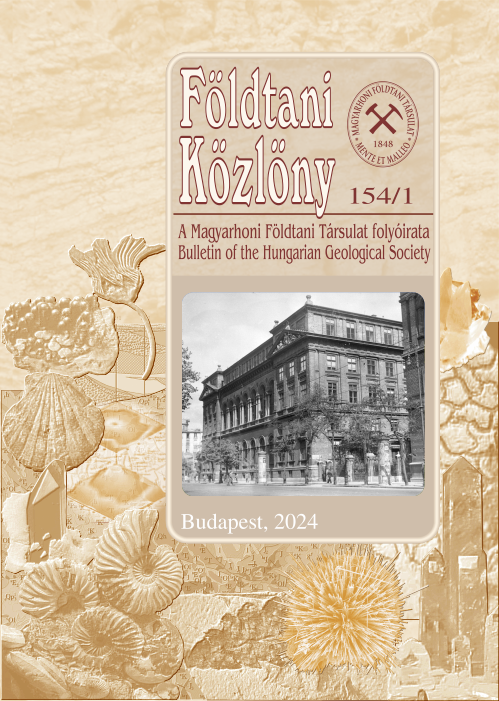The geological, palaeontological and sedimentological pattern of the Vasas Mari Formation between Zsibrik and Ofalu, South Transdanubia
Abstract
In the north-western segment of the research area chosen as the field for radioactive waste disposal
in the Lower Jurassic Vasas Mari Formation, there alsó occur on the surface as smaller outcrops in
connection with the mass of the Mórágy Gránité Formation and the Ofalu Phyllite Formation. These lie
in a narrow beit between the villages Ofalu and Zsibrik. To the north-west of the Jurassic surface
outcrops underneath the Quaternary and Neogene sediments in a few boreholes (prospected for coal)
penetrated not only the Vasas Mari but alsó its underlying formations as follows: Mecsek Coal Formation
and Karolinavölgy Formation and somé non-identifiable Upper Triassic carbonates. Thanks to the
mapping activity and the control of borehole successions new phenomena have been discovered such as
dolomité fragment- and dolomité pebble-bearing beds containing alsó fragments of colonial corals and
alsó variegated young clays pressed into the tectonic zone bordering the Vasas Mari to the south-east.
The issues that need to be solved during the activity mentioned above were answered by carrying out
palaeontological, mineralogical-petrological and sedimentological studies.
The main conclusions are as follows:
- angular fragments and pebbles of dolomité derive from an elevated area located to the south, southeast from the depocenter;
- the highly weathered status of the dolomité is an indication of a secondary (Late Triassic)
depositional environment from where the pebbles have been gravitationally transported (redeposited)
to the recent place. Owing to the collision of the weathered pebbles, during the redeposition they were
often broken into pieces and became angular again;
- taking into consideration of the highly weathered condition of the dolomité pebbles it can be stated
that the distance the sediment was transported from the south to the north could not have exceeded 1
or 2 km;
- among extraformational pebbles there are only a few grains of quartz of metamorphite origin and
this may indicate a metamorphic source area in a more southerly position behind the Triassic platform
during the early Early Jurassic time;
- only fragments of colonial corals and certain bivalves can be taken into account as intraformational
fossils; corals must have been living in a transparent, shallow water, coastal area where siliciclasts were
subordinate;
- on the bases of the lithologic composition of the rock fragments it is suggeted that the Zsibrik study
area is bordered by a dextral strike-slip fault (Ofalu Line) along which the Zsibrik Block was transported
at least 20 km in a north-east direction after the Early Jurassic (probably Neogene) (However a sinistral
strike-slip motionmight have taken place, given the evidence from recently acquired knowledge.











